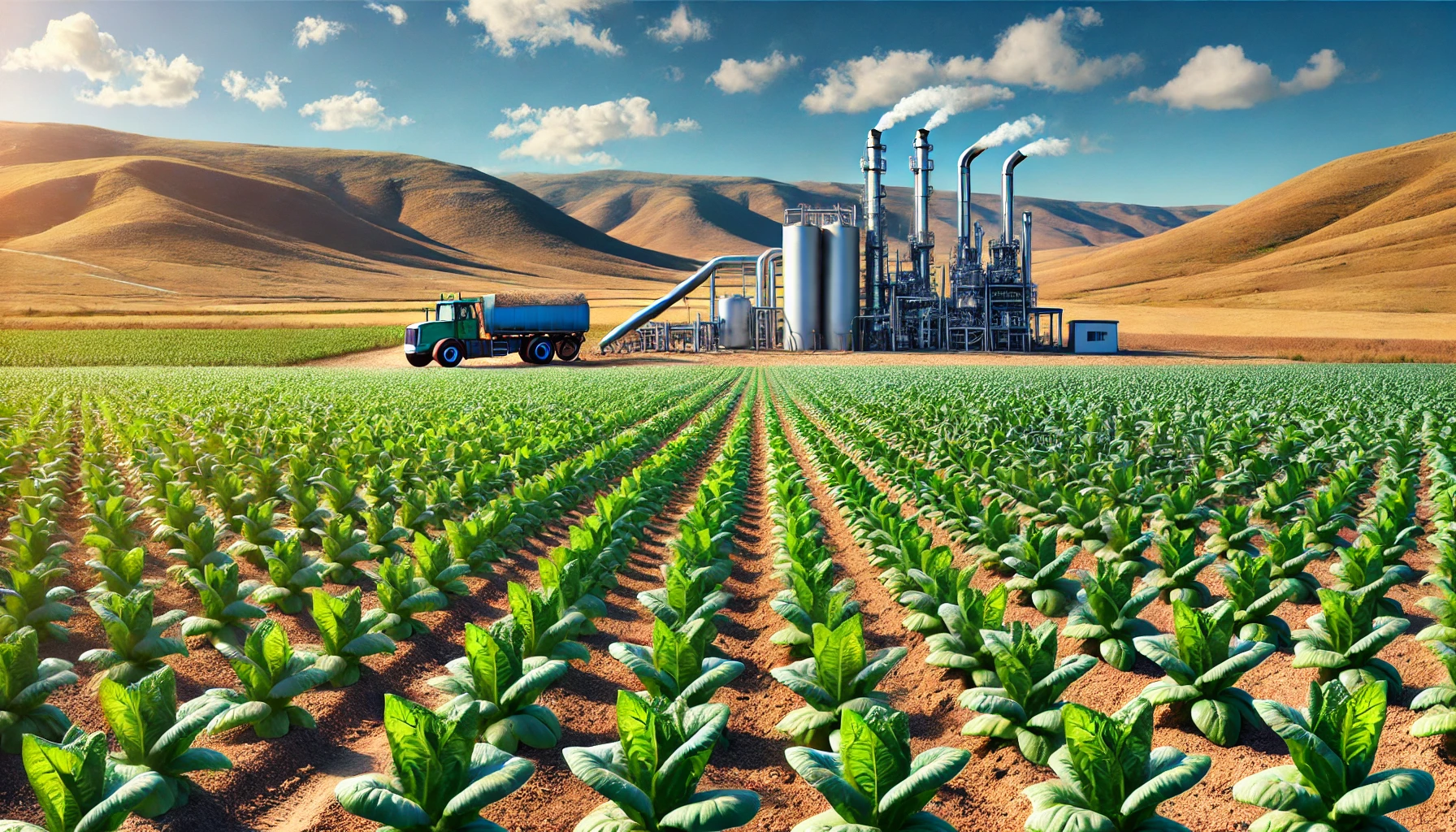Tobacco's Green Future: From Controversial Crop to Carbon-Reducing Biofuel
A new study highlights tobacco's potential as a sustainable crop for biofuel production, offering significant carbon emission reductions when cultivated on barren lands. The innovative process involves minimal pretreatment, making it both cost-effective and environmentally beneficial.

A team of researchers from the Qingdao Institute of Bioenergy and Bioprocess Technology at the Chinese Academy of Sciences, the Korea Advanced Institute of Science and Technology (KAIST), and other collaborating institutions has presented a compelling case for the use of tobacco as a sustainable crop for biofuel and bioproduct production. Traditionally known for its controversial role in the smoking industry, tobacco has recently drawn attention for its potential in bioenergy. The study highlights that tobacco’s unique chemical properties, such as its high water-solubility and the presence of carbohydrates, proteins, and acids, make it a promising candidate for a low-carbon biorefinery system. The researchers emphasize that with minimal processing, tobacco can be converted into a nutrient-rich medium that supports the growth of microorganisms, making it a valuable resource for biofuel production without the need for additional pretreatment, costly enzymes, or supplements. This breakthrough could significantly reduce both the financial and environmental costs of biofuel production.
Cultivating Tobacco on Barren Lands
One of the most striking findings of the research is the potential for tobacco cultivation on barren or marginal lands that are not suitable for food production. Traditionally, energy crops have faced criticism for competing with food resources and contributing to land-use conflicts. However, the researchers argue that growing tobacco on non-arable land would not only avoid such competition but also provide a sustainable source of biomass. This approach, according to the study, could generate around 573 billion gallons of ethanol annually, which is approximately 20 times the global ethanol production in 2019. Such large-scale production could make a substantial contribution to global energy demands while significantly reducing carbon emissions. In fact, the study estimates that the use of tobacco biomass could lead to a 76% reduction in greenhouse gas emissions when compared to conventional bioethanol production methods, such as those that use corn stover.
A Cost-Effective Autoclaving Process
The process developed by the researchers involves autoclaving tobacco leaves at relatively low temperatures and pressures, which dissolves a significant portion of the biomass into a solution. This solution, rich in sugars, nitrogen, and other nutrients, supports the growth of microorganisms like Escherichia coli and Saccharomyces cerevisiae, which are commonly used in fermentation processes to produce biofuels. The autoclaving process eliminates the need for harsh chemical treatments or energy-intensive hydrolysis, which are typically required in the conversion of lignocellulosic biomass into fermentable sugars. This innovation is key to making tobacco a cost-effective option for biofuel production, as it bypasses some of the most expensive steps in the biofuel production process. In experiments, the researchers showed that engineered strains of yeast and bacteria could efficiently produce ethanol and other biofuels when grown in the tobacco-derived medium. They also found that the nicotine present in the tobacco leaves did not significantly affect the growth of the microorganisms, which suggests that the tobacco medium could be widely applicable in biofuel and biochemical production.
Lower Energy Consumption and Greenhouse Gas Emissions
Another significant aspect of the research is the life cycle assessment (LCA) performed to evaluate the environmental impact of tobacco-based biofuel production. The LCA compared the energy consumption and greenhouse gas emissions of tobacco-derived bioethanol with those of bioethanol produced from traditional feedstocks like corn stover. The results showed that tobacco-based ethanol consumed 26% less energy and produced 27% fewer greenhouse gas emissions. This reduction is attributed to the more efficient bioconversion process used for tobacco, which skips several energy-intensive steps required in conventional biomass processing. The study further noted that when grown on barren lands, tobacco cultivation would have minimal indirect land-use impacts, unlike many first-generation biofuel crops that contribute to deforestation and other environmental harms.
Economic Viability of Tobacco as a Biofuel Source
The economic feasibility of tobacco as a biofuel source is another important consideration. The study acknowledges that while tobacco leaves have been proposed as a biofuel feedstock before, previous attempts were often deemed economically unviable due to the low value of the biofuel produced relative to the cost of cultivation and processing. However, the researchers argue that by using tobacco to produce not only biofuels but also higher-value biochemicals, the economic outlook improves significantly. Tobacco’s high nitrogen content and its ability to grow on marginal lands make it particularly attractive for producing both energy and biochemicals, as it reduces the need for external nitrogen sources and minimizes land-use competition.
A New Role for Tobacco in Sustainable Energy
Overall, this study presents a comprehensive and innovative strategy for the sustainable production of biofuels and bioproducts using tobacco as an energy crop. By repurposing tobacco, a historically controversial crop, for use in a low-carbon biorefinery, the researchers have demonstrated a way to produce renewable energy while addressing key environmental and economic challenges. Their findings suggest that tobacco could play a critical role in the global transition to renewable energy, particularly by utilizing barren lands that would otherwise remain unproductive. The study not only offers a new perspective on tobacco’s utility but also provides a potential pathway for reducing carbon emissions and meeting global energy demands in a more sustainable manner.
- FIRST PUBLISHED IN:
- Devdiscourse
ALSO READ
Revolutionizing Clean Energy: New Biofuel Breakthrough at IIT Guwahati
Delhi Schools to Enforce Strict Tobacco-Free Guidelines
IIT Guwahati's Bio-Revolution: Methane to Clean Biofuels
Major Gutkha Seizure in Latur: Crackdown on Illicit Tobacco Trade
Raising the Bar: Experts Push for Higher Sin Tax on Tobacco for Healthier India










